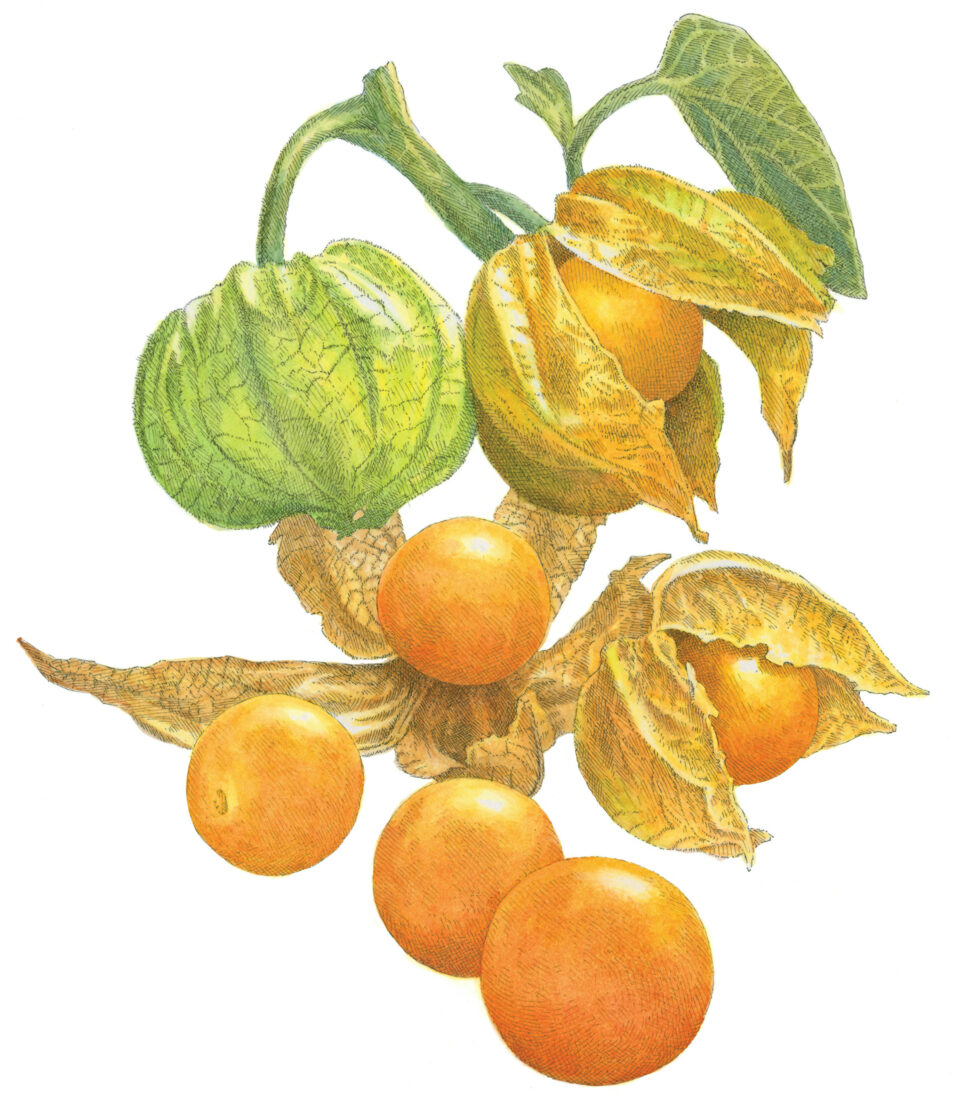While touring a farm outside Baltimore a few years ago, chef Kat Petonito and her team spotted gemlike orange fruits, wrapped in thin papery husks, sprawling across the soil. The farmer lifted the bug net so they could take a closer look—and enjoy a taste. “He plucked a couple off the ground and handed them to us to snack on,” says Petonito, the executive chef at Washington, D.C.’s the Duck & the Peach, La Collina, and the Wells. “I was expecting a sour, gooseberry-esque taste but was met with a completely different flavor and fell instantly in love.”

The mystery fruit, she learned, was a ground-cherry (also called a husk cherry), and it has since become a seasonal staple on her menus. “Most caped fruits are tart, but that’s not the case with ground-cherries,” Petonito says. “They are sweet with a bit of a citrusy note, and they have this undertone of vanilla that is just delightful.” Cousins of tomatillos and an easy garden crop, ground-cherries peak in the summer and dwindle by fall (make sure to eat only when they’re ripe, to avoid any possible toxins). While you may see them in the grocery store, you’re more likely to find them at farmers’ markets. The cape should be closed, crisp, and a tan color. The fruit inside has a slightly sticky skin—just give it a little rinse. While they’re great to eat just as they are, they can also star in syrups, sauces, preserves, and pies. They make a lovely addition to salads, or dip them in chocolate for an easy sweet treat.
As for Petonito, she loves to pair them with diver scallops (see recipe), balancing the sweetness of the shellfish with the citrus hit of the cherries. If you’re serving ground-cherries to guests, expect a pleasantly perplexed reaction to this little fruit that looks like a tomato or a berry but brings a taste all its own. “Flavor-wise, they are just crazy,” Petonito says. “Most people are surprised, in a good way, when trying them for the first time—myself included.”








